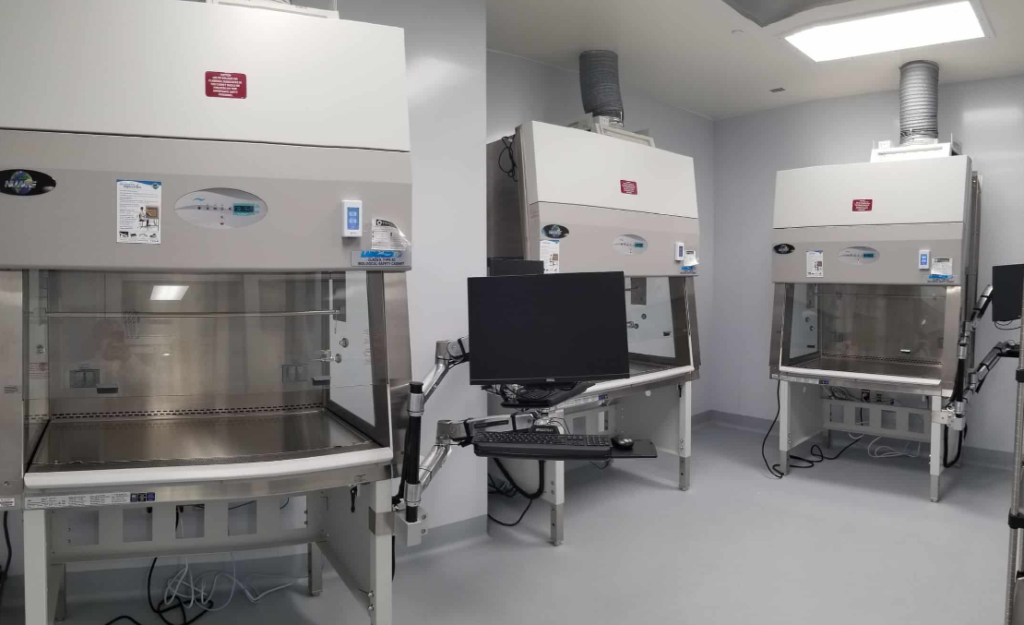Key Takeaways
- Regular testing of biosafety cabinets ensures a safe environment for laboratory personnel.
- Adhering to safety standards is crucial to protecting manufactured products and ongoing experiments.
- Understanding the testing process can enhance compliance and efficiency in laboratory settings.
In the intricate world of laboratory research and manufacturing, safety is not just a priority; it’s a necessity. Laboratories are bustling hubs of innovation where delicate experiments and intricate processes unfold daily. Amid this activity, the significance of bio-safety cabinet testing emerges clearly. These cabinets serve as critical barriers, filtering and maintaining air quality to protect scientists from hazardous agents. Without them, the risk to both personnel and research integrity would increase substantially.
Biosafety cabinet (BSC) testing is a process that cannot be overlooked. It’s an essential practice that not only complies with regulatory requirements but also fortifies the safety net within which researchers operate. Essentially, it ensures that BSCs perform optimally, preventing contamination and protecting staff from biological hazards. Vigilant testing of these cabinets solidifies their role as sentinels of scientific safety.
Understanding Biosafety Cabinets
Biosafety cabinets are specialized workspaces that play a pivotal role in laboratories by providing a clean and contaminant-free environment. These cabinets are designed to filter air through high-efficiency particulate air (HEPA) filters, capturing potentially dangerous particles. Different classes of BSCs, such as Class I, II, and III, cater to various levels of biohazard containment, offering tailored protection depending on the risk present in the laboratory setting.
Importance of Regular Testing
The regular testing of BSCs is akin to a medical check-up, ensuring everything is functioning as it should. This guarantees laboratory safety and conforms to the stringent regulations mandated by health and safety organizations worldwide. Regular testing can significantly reduce the likelihood of contamination events and usher in new levels of accountability within laboratory environments. By adhering to best practices, laboratories not only protect their personnel but also safeguard the validity of their experiments and results.
Discover in-depth guidance through the CDC’s biosafety guidelines, which provide a wealth of information on maintaining safety standards.
Key Safety Standards for Laboratories
To uphold safety, laboratories must comply with international standards such as NSF/ANSI 49, which outlines specific testing and performance criteria for BSCs. These standards are instrumental in verifying that cabinets operate as intended under various conditions. Adherence to these standards provides assurance that laboratories can prevent hazardous exposure efficiently, reflecting a commitment to public health and scientific reliability.
Step-by-Step Testing Process
The testing process is multifaceted, involving several critical steps to ensure a comprehensive evaluation. It begins with testing airflow to confirm the cabinet’s filtration efficiency. Technicians perform HEPA filter integrity tests using aerosolized agents to check for potential leaks. Additional assessments include smoke pattern tests, which visualize airflow to ensure no contaminants escape containment. Well-trained and certified personnel are necessary to conduct these tests, emphasizing the importance of proficiency and expertise in these procedures.
The WHO Laboratory Biosafety Manual serves as an excellent resource for safety protocols and testing processes.
Challenges and Solutions in Biosafety Cabinet Testing
While essential, the process of testing BSCs is not without its challenges. Laboratories face logistical issues, like scheduling regular maintenance without disrupting workflows. Unforeseen equipment malfunctions or non-compliance with testing protocols can result in safety lapses. Solutions to these issues include regular training programs for staff, investing in reliable testing equipment, and establishing a proactive maintenance routine to promptly address any emerging issues.
Common Myths About Biosafety Cabinets
Biosafety cabinets, despite their efficacy, are sometimes surrounded by misconceptions. A prevalent myth is that routine testing is unnecessary if the cabinet appears to be functioning. This belief undermines the preventive aspect of regular maintenance checks, which are crucial in identifying hidden issues. Another misconception is the assumption that all biosafety cabinets are identical. In reality, each class has distinct design and functional specifications suitable for distinct types of laboratory work and associated risks, making it vital to select and maintain the appropriate type for specific environments.
Real-World Applications and Case Studies
Across industries, BSCs are integral to maintaining safe working conditions. In pharmaceutical research, for example, contamination could render entire batches of products hazardous. Similarly, in clinical laboratories, patient samples must be handled in sterile conditions to ensure diagnostic accuracy. Case studies reveal that regular biosafety cabinet testing is pivotal in preventing contamination, thus protecting both human health and financial investments.
Conclusion: Moving Forward with Confidence
By maintaining robust biosafety standards through regular testing and adherence to guidelines, laboratories can confidently pursue new scientific horizons. This enhances the safety of existing research activities and fosters an environment where innovation can flourish. As laboratory technology advances, staying informed and committed to best practices in safety and testing procedures ensures that the pursuit of knowledge continues unabated and under the best possible conditions.

